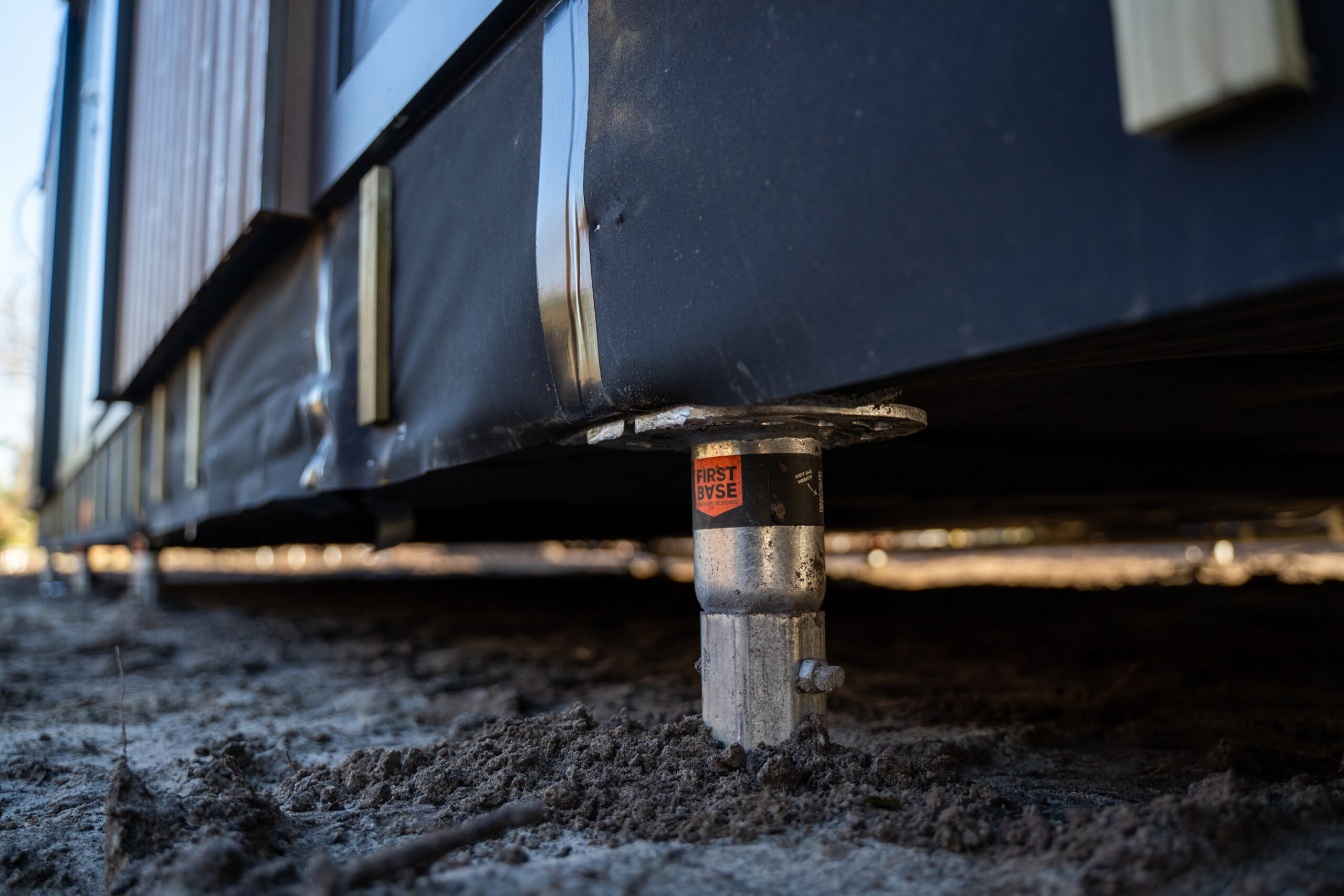
No Standard Lifespan for Ground Screw Foundations
When a client invests in a foundation, one of the first questions is often: “How long will it last?” or “How do I determine the lifespan of a ground screw foundation?” It’s a logical question. A foundation forms the backbone of any structure. If it fails, everything above is compromised.
Lifespan is not just a technical consideration, it’s also a financial and sustainability question: how long will the investment remain reliable and low-maintenance? There is no single, universal answer, because lifespan is always determined by local soil conditions and the surrounding environment. Ultimately, the soil has the final say. This is why it’s essential to distinguish between service life and lifespan.
Service Life vs. Lifespan
For steel ground screws (also known as steel piles with screw thread), understanding the difference between service life and lifespan is pivotal. Although these terms are often used interchangeably, they mean different things and require different assessments.
- Service life refers to the period during which the foundation must perform its function in relation to the structure. A temporary care unit might require 10 years, whereas a residential building may need to last 50 to 100 years.
- Lifespan refers to the intrinsic technical durability of the material and load-bearing structure. For steel screw foundations, this means: how long the steel remains sufficiently strong and corrosion-resistant under the given conditions to safely fulfil its structural role.
The principle is simple: if the lifespan exceeds the service life, there is no problem. If the lifespan risks being shorter, additional measures must be taken.

Soil and Environmental Conditions as Key Factors
The lifespan of steel screw foundations is strongly influenced by the soil conditions in which they are installed. Corrosion processes underground determine how quickly steel is degraded. For a reliable prediction of lifespan, soil data is always required. A thorough environmental investigation examines the chemical quality of the soil and groundwater at the specific site. Key factors include:
Soil type: Each soil type has its own properties and influence on corrosion. Whether piles are installed in sand, clay, peat or loam makes a difference. Moisture content, permeability and oxygen levels strongly influence corrosion rates.
Groundwater: A second key factor is both the level and the fluctuations of the water table. In permanently saturated, oxygen-free layers, corrosion is relatively slow. In transition zones where wet and dry alternate, corrosion accelerates significantly.
Soil acidity (pH): Low pH levels (acidic soil) accelerate corrosion, whereas neutral or slightly alkaline soils can form natural protective layers on the steel, extending its lifespan.
Salts and conductivity: Chlorides and sulphates, often present in coastal or contaminated soils, can significantly increase corrosion. The electrical conductivity of the soil indicates how active electrochemical processes — and therefore corrosion — may be.
Organic activity: In peat or soils rich in organic matter, microbiological processes can cause MIC (microbially induced corrosion), leading to an accelerated localised attack on the steel.
Oxygen: Finally, at greater depths with little oxygen, steel can remain intact for surprisingly long periods. Near the surface, where oxygen periodically occurs, conditions are more critical, hence chemical soil investigations typically focus on this layer.
From Soil Investigation to Foundation Design
The only reliable way to predict the lifespan of a screw foundation is through location-specific soil investigations.
For load-bearing capacity, cone penetration tests (CPT) are typically carried out to determine soil layering and strength. For lifespan assessment, however, additional chemical soil investigations are required, as soil chemistry determines corrosion rates.
This usually involves taking multiple soil samples across the site. The larger the site, the more samples are required. These are analysed in a laboratory. Based on the results, design assumptions can be made — such as the annual zinc layer loss (in microns per year) and steel corrosion rate (millimetres per year). From this, the minimum wall thickness of the pile can be calculated, considering load requirements and a corrosion allowance over the intended lifespan.
Additional protective measures, such as special coatings, galvanisation or even cathodic protection, are assessed if necessary. This approach allows the intrinsic lifespan of the foundation system to be aligned with the required service life of the structure.
The result: a foundation that remains reliable not only today, but well into the future.
In Conclusion
The lifespan of a ground screw foundation is not fixed. Soil, groundwater and chemistry together ultimately determine the actual lifespan. That’s why our assessments are always based on proven data, giving you a clear and reliable foundation for long-term planning.
Planning a project and need certainty about the lifespan of your ground screw foundations? Contact us. We can help you demonstrate the reliability of your foundations for tenders, inspections and long-term performance — giving your project the solid, durable base it needs.
Would you like to know more? Get in touch with us using the button below.


